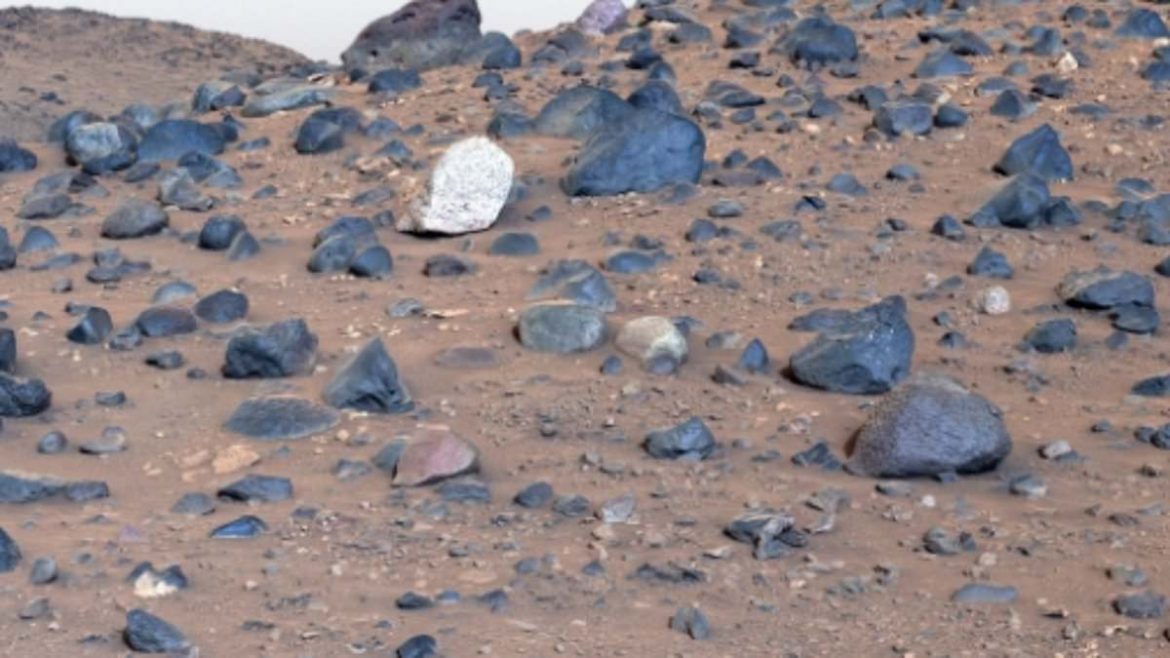NASA has recently shared its most detailed view of Mars yet, captured by the Perseverance rover.
Among the fascinating images, the rover revealed a mesmerizing sight of blue volcanic rocks scattered across the Martian surface.
This latest discovery offers a closer look at an ancient lakebed on Mars, providing researchers with more clues about the planet’s past.
Unveiling a Unique Geological Formation
As Perseverance continues its mission, it uncovered an extraordinary geological formation, unlike anything NASA has seen before.
A striking combination of dark blue volcanic rocks, identified as basalt, was found surrounding a white-speckled boulder with a unique mineral composition.
This unusual discovery prompted the team to name the rocky terrain “Mount Washburn,” after a mountain in Yellowstone National Park.
Exploring Jezero Crater’s Ancient Past
Perseverance has been exploring Jezero Crater, an asteroid impact site, since February 2021.
Billions of years ago, this basin was home to flowing rivers and a large lake.
Scientists believe this area once supported alien life, thanks to its rich deposits of fine-grained sand and clay, which are perfect for preserving fossils.
The rover was sent to explore this region with the hope of uncovering evidence of ancient life on Mars.
A Surprising Discovery: The ‘Atoko Point’ Rock
In the midst of these blue volcanic rocks, a bright white boulder stood out, catching the attention of NASA scientists.
This eye-catching rock, measuring about 18 inches wide and 14 inches tall, was later named “Atoko Point,” in honor of a towering cliff in the Grand Canyon.
The discovery was so striking that Dr. Katie Stack Morgan, a planetary geologist from NASA’s Jet Propulsion Laboratory, described it as a “bright, shiny thing” that the team couldn’t ignore.
Advanced Tools Uncover Anorthosite Rock
Thanks to Perseverance’s advanced set of tools, including SuperCam, NASA was able to analyze the chemical composition of Atoko Point.
This tool’s lasers and spectrometers revealed that the rock is made of anorthosite, a type of volcanic rock rich in silica.
While basalts are common on Mars, this was the first time anorthosite had been discovered on the planet.
This breakthrough could shed light on Mars’ deeper geological layers and its volcanic history.
What’s Next for Perseverance?
As Perseverance continues to explore Mars, scientists are eager to find more rocks like Atoko Point.
These discoveries could help unravel the mystery of how Mars’ early crust was formed and offer a better understanding of the planet’s history.
The hope is that future findings will reveal even more about what lies beneath the Martian surface and how it compares to Earth’s geological processes.
NASA’s Perseverance mission continues to push the boundaries of space exploration, and the discoveries made so far have given scientists exciting new insights into the Red Planet’s past.
With every new find, humanity moves one step closer to understanding whether Mars once supported life and what mysteries still lie hidden beneath its surface.
Mine Crypto. Earn $GOATS while it is free! Click Here!!